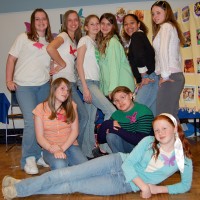Develop Young Voices
Providing opportunities for making choices and speaking out are critical components of a model positive youth development program. But it’s challenging to do this with a large group of kids who may want to go in 30 different directions. These skills and qualities empower youth to plan for groups they belong to and for advisory councils and committees. Make sure to help the kids you know develop these skills!
- Assertiveness
- A sense of security
- How to express feelings, thoughts, ideas and opinions in a non-threatening manner
- Receiving constructive criticism
- Self-respect
- Listening skills
- Turn mistakes into learning opportunities
- Work in metaphors–match “lesson of the day” with an activity/project/craft–that creates a lasting memory
- Plan and organize ideas
- Value differences
- Provide youth with opportunities to practice leading, offering input, etc.
- Model these skills for youth
- Take time for training on the above skills











